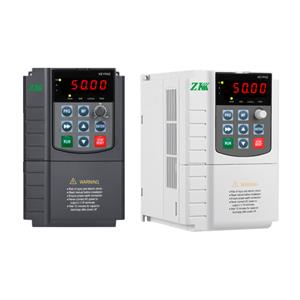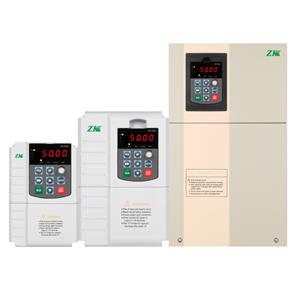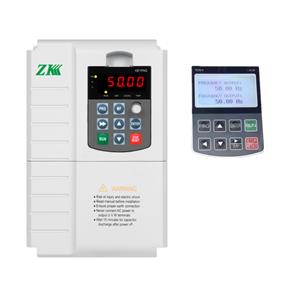Steps that need to be debugged for the no-load operation of the solar pump inverter
The general inverter has 6 keys such as run (RUN), stop (STOP), programming (PROG), data/confirmation (DATA/ENTER), increase (UP, ▲), decrease (DOWN, ▼), etc. The definitions of the controller operation keys are basically the same. In addition, some inverters have function keys such as monitor (MONTTOR/DISPLAY), reset (RESET), jog (JOG), and shift (SHIFT).
2. The solar pump inverter runs with no load of the motor
1. To set the power and pole number of the motor, the working current of the inverter should be comprehensively considered.
2. Set the maximum output frequency, fundamental frequency and torque characteristics of the inverter. The selection of V/f type includes items such as maximum frequency, basic frequency and torque type. The highest frequency is the highest frequency that the inverter-motor system can run. Since the highest frequency of the inverter itself may be higher, when the highest frequency allowed by the motor is lower than the highest frequency of the inverter, it should be set according to the requirements of the motor and its load. Certainly. The basic frequency is the dividing line between the constant power control and constant torque control of the motor by the inverter, and it should be set according to the rated voltage of the motor. Torque type refers to whether the load is a constant torque load or a variable torque load. The user selects one of the types according to the V/f type diagram and load characteristics in the inverter instruction manual. General-purpose inverters are equipped with multiple V/f curves for users to choose. Users should select the appropriate V/f curve according to the nature of the load. For fan and pump loads, set the torque operation code of the inverter to variable torque and reduced torque operation characteristics. In order to improve the low-speed performance when the inverter starts, so that the torque output by the motor can meet the requirements of starting the production load, the starting torque should be adjusted. In the asynchronous motor variable frequency speed regulation system, the torque control is more complicated. In the low frequency band, since the influence of resistance and leakage reactance cannot be ignored, if V/f is still kept constant, the magnetic flux will decrease, thereby reducing the output torque of the motor. For this reason, the voltage should be properly compensated in the low frequency band to increase the torque. Generally, the inverter is manually set and compensated by the user.
3. Set the inverter to its own keyboard operation mode, press the run key and the stop key to observe whether the motor can start and stop normally.
4. Familiarize yourself with the protection code when the inverter fails to operate, observe the factory value of the thermal protection relay, observe the set value of the overload protection, and modify it when necessary. The user of the inverter can set the electronic thermal relay function of the inverter according to the instruction manual of the inverter. The threshold value of the electronic thermal relay is defined as the ratio of the rated current of the motor and the inverter, usually expressed as a percentage. When the output current of the inverter exceeds its allowable current, the overcurrent protection of the inverter will cut off the output of the inverter. Therefore, the maximum threshold value of the electronic thermal relay of the inverter does not exceed the maximum allowable output current of the inverter.




